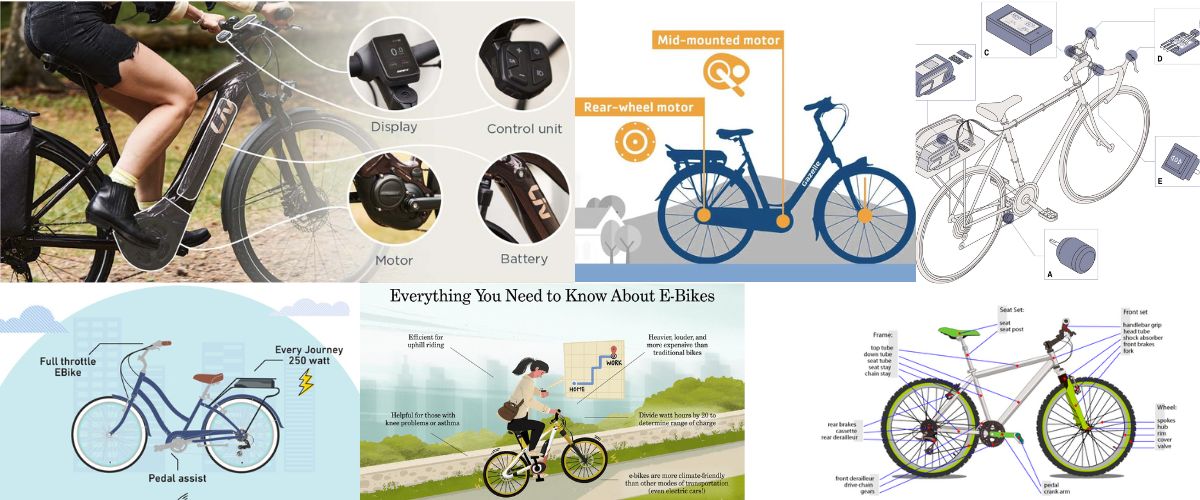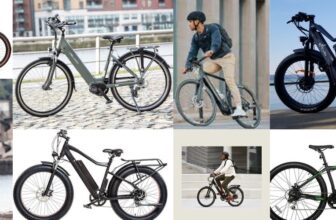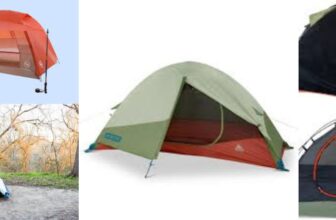
Updated on August 1, 2024
Electric bikes, commonly known as e-bikes, are revolutionizing the way people commute and explore their surroundings. Combining the traditional features of a bicycle with the added benefit of electric power, e-bikes offer a versatile, eco-friendly, and efficient mode of transportation. Here’s a comprehensive guide on how electric bikes work, including key components, types, and tips for choosing the right e-bike for your needs.
Key Components of an Electric Bike
- Electric Motor The motor is the heart of an e-bike, providing the necessary power to assist with pedaling. Motors can be located in three different places:
- Hub Motors: Positioned in the center of the front or rear wheel, these motors provide direct propulsion to the wheel.
- Mid-Drive Motors: Located near the bike’s bottom bracket (pedal area), these motors offer a balanced ride and better torque, especially useful for climbing hills.
- Battery The battery stores the electrical energy needed to power the motor. E-bike batteries are typically lithium-ion due to their high energy density and long lifespan. The battery’s capacity, measured in watt-hours (Wh), determines how far you can travel on a single charge. Charging times and battery life depend on the battery size and usage patterns.
- Controller The controller manages the power flow from the battery to the motor. It allows riders to adjust the level of assistance provided by the motor, usually through handlebar-mounted controls or a display unit.
- Pedal Assist and Throttle
- Pedal Assist: This system senses your pedaling and provides proportional assistance from the motor. The level of assistance can usually be adjusted, offering more or less help as needed.
- Throttle: Some e-bikes come with a throttle, similar to a motorcycle, allowing the rider to engage the motor without pedaling. Throttle control provides immediate power and can be useful for quick starts or when navigating difficult terrain.
Types of Electric Bikes
- City/Commuter E-Bikes Designed for urban environments, these bikes typically feature a comfortable upright riding position, fenders, and lights for safety. They are ideal for daily commutes and short trips around town.
- Mountain E-Bikes Built for off-road adventures, these bikes have robust frames, suspension systems, and powerful motors to handle steep climbs and rough terrain.
- Folding E-Bikes Perfect for travelers and those with limited storage space, folding e-bikes are compact and easy to transport. They combine portability with the convenience of electric assistance.
- Cargo E-Bikes These bikes are designed to carry heavy loads, with extended frames and reinforced components. They are popular among families and businesses for transporting children, groceries, or goods.
Tips for Choosing an Electric Bike
- Determine Your Needs Consider where and how you plan to use your e-bike. For city commuting, a lightweight commuter bike may suffice, while off-road adventures require a more rugged mountain e-bike.
- Check the Range Look for a battery with sufficient range to cover your typical rides. Remember that factors like terrain, rider weight, and level of motor assistance affect the actual range.
- Consider the Motor Power Higher wattage motors provide more power and better performance on hills, but they also consume more battery. Choose a motor that matches your riding style and terrain.
- Test Ride Always test ride different models to find one that feels comfortable and meets your performance expectations.
- Look for Quality Components Invest in an e-bike with reliable components, including the motor, battery, brakes, and frame. Quality parts ensure a safer and more enjoyable riding experience.
Electric bikes offer a practical and fun way to travel, providing the benefits of cycling with added ease and efficiency. By understanding how they work and what to look for, you can choose the perfect e-bike to suit your lifestyle and needs.






